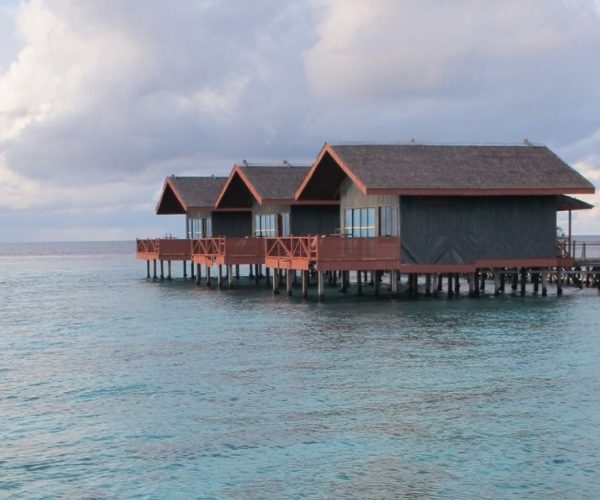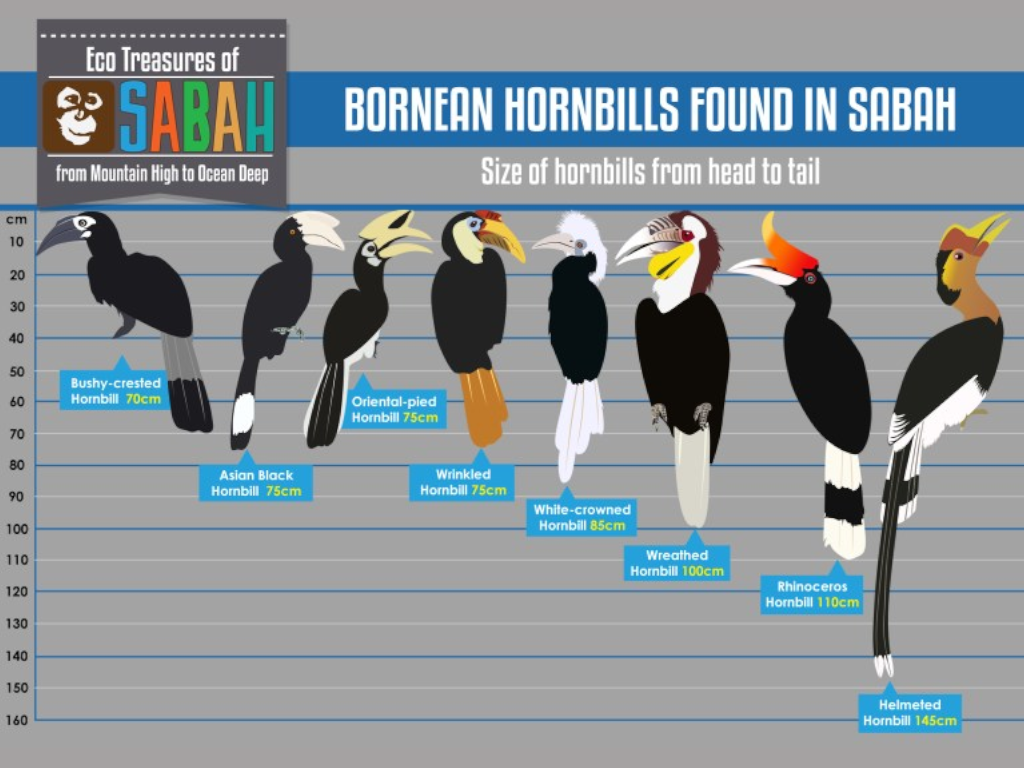Sarawak might be called the “Land of the Hornbills” but plenty of these birds also call Sabah their home. There are 8 species of hornbills found in Sabah which includes the rhinoceros hornbill, helmeted hornbill, wrinkled hornbill, white-crowned hornbill, oriental pied hornbill, Asian black hornbill, bushy-crested hornbill and wreathed hornbill.
Here’s how you can differentiate the 8 hornbills from each other;
Bushy-crested hornbill
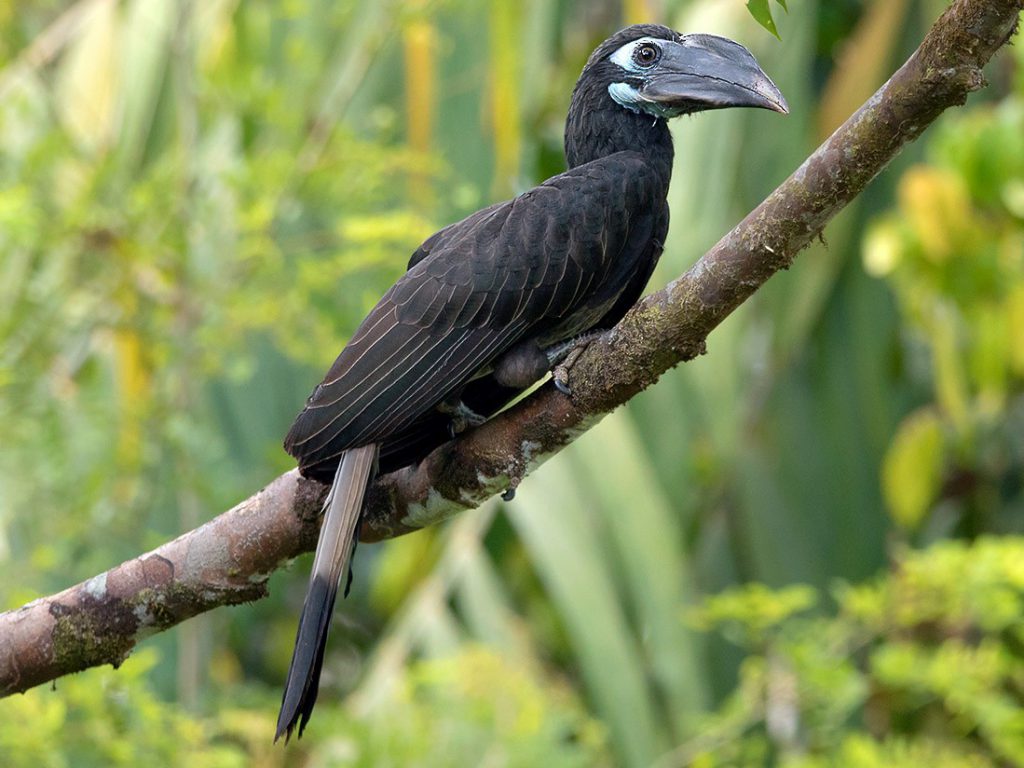
Bushy-crested hornbills are a medium-sized dark-coloured bird with bicoloured tail that prefers roaming around subtropical and tropical lowland areas.
Asian black hornbill
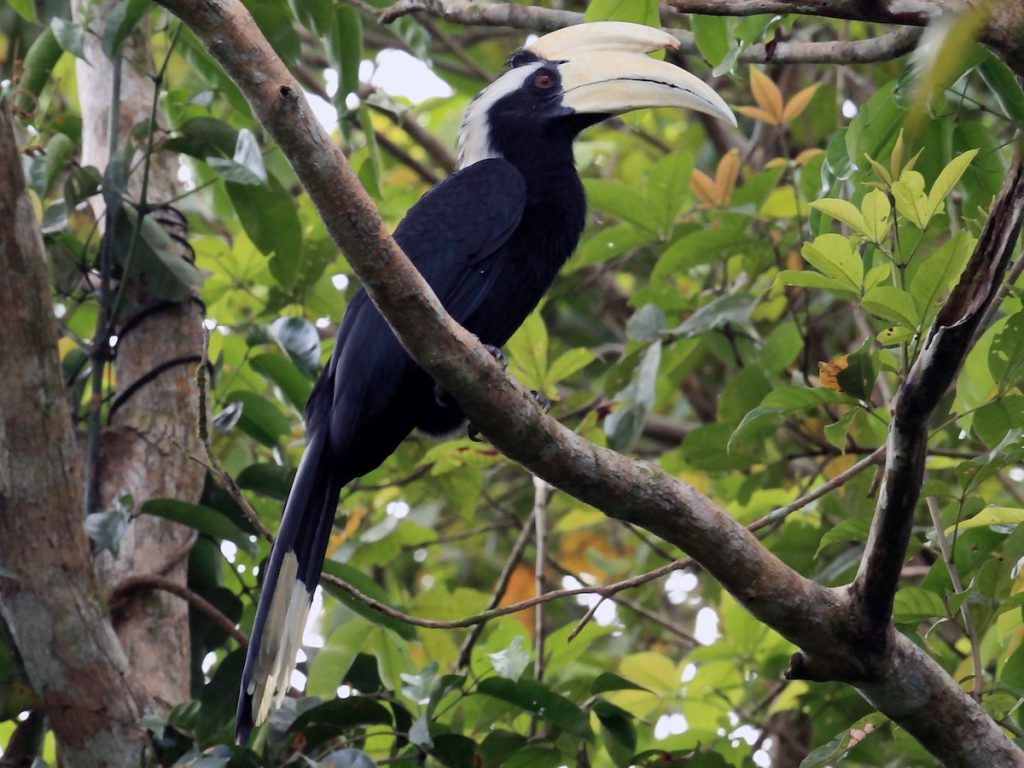
These hornbills are mainly black with a large bill that is bone-white for males and black for females. They are more likely to be found in lowland mature forests.
Oriental-pied hornbill
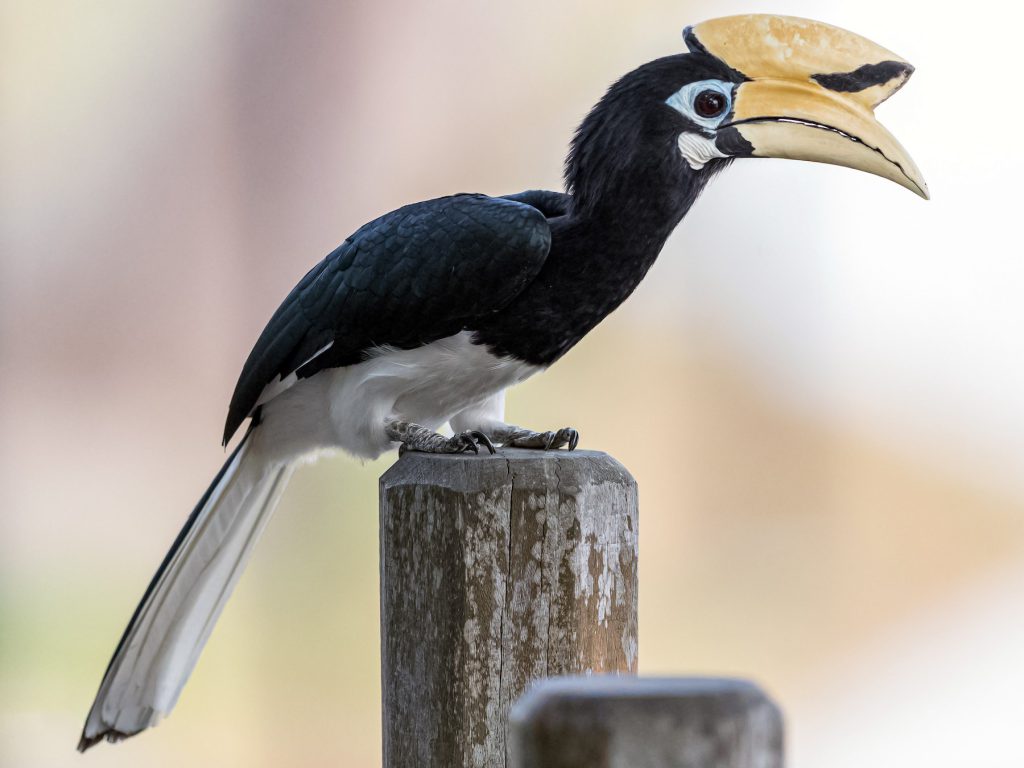
The oriental-pied hornbill is a small black and white coloured bird with a whiteish-yellow casque and bill. This hornbill is considered more common among Asian hornbills.
Wrinkled hornbill
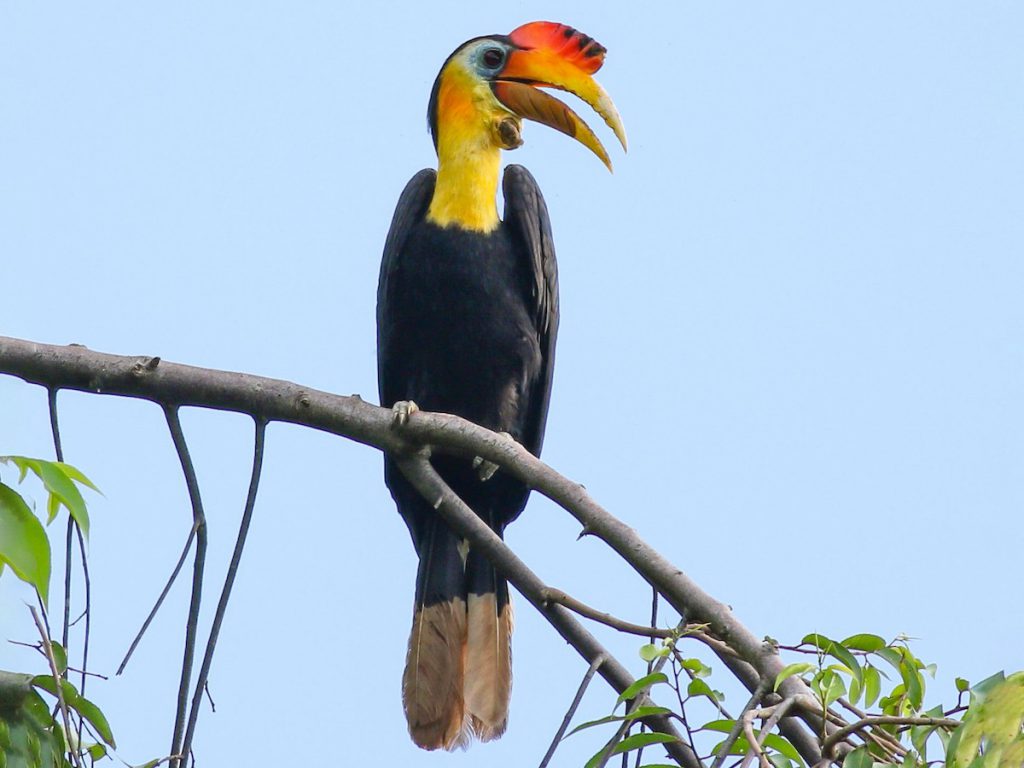
These are brightly colored medium-large hornbills with a blobby throat pouch. The males have pale yellowish throat and a yellow-and-red bill and casque whereas the females have plain yellow bill and casque and bare blue skin around the eyes and on the “pouch”.
White-crowned hornbill
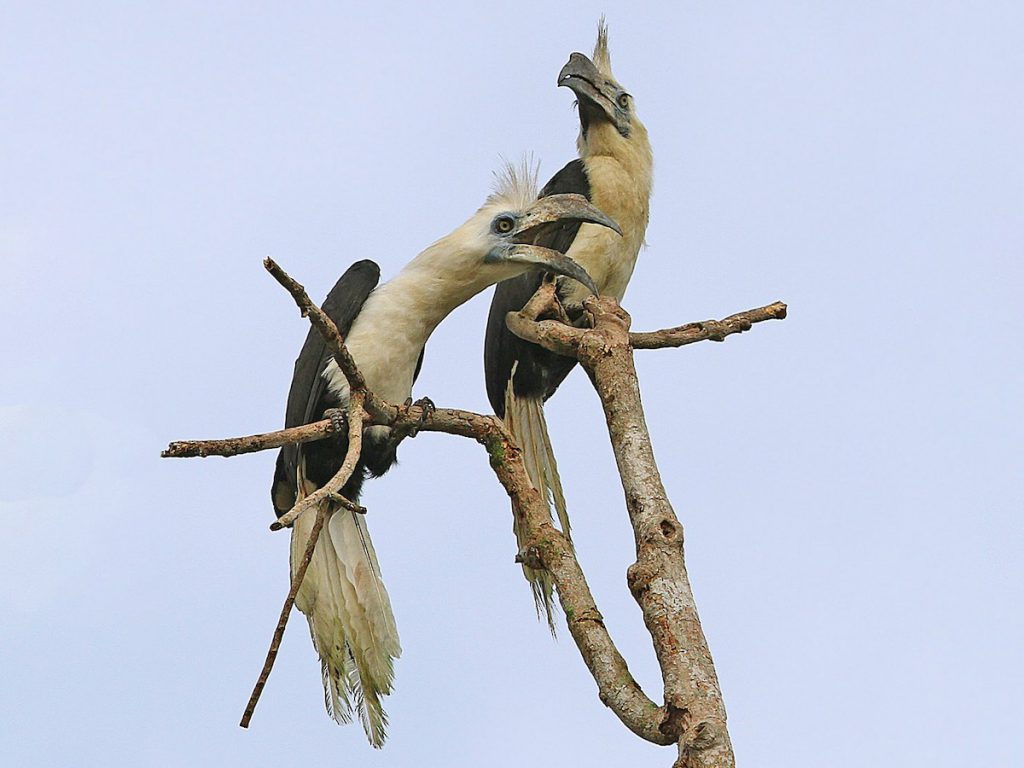
These hornbills can be easily distinguished by the white crown feathers on their crest. Males are usually white from the head down while females are black with white crest.
Wreathed hornbill
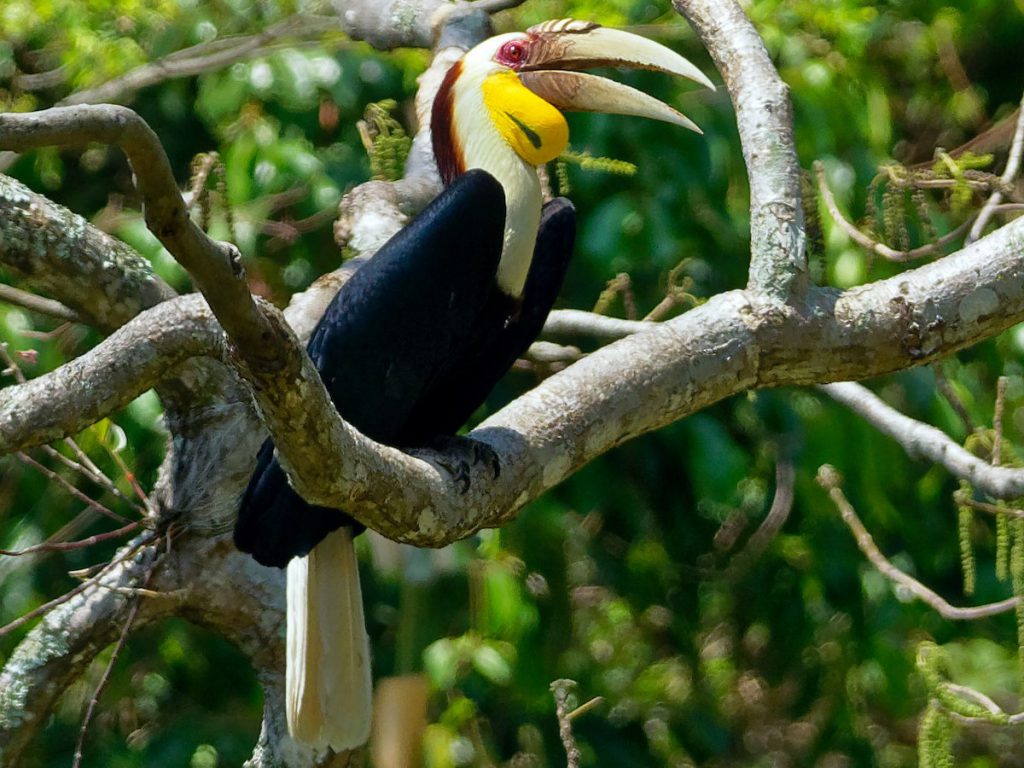
Wreathed hornbill, also known as the bar-pouched wreathed hornbill, can be found in highland areas. The male has a yellow face and throat patch, while the female has a red patch of skin around the eye and a blue throat patch.
Rhinoceros hornbill
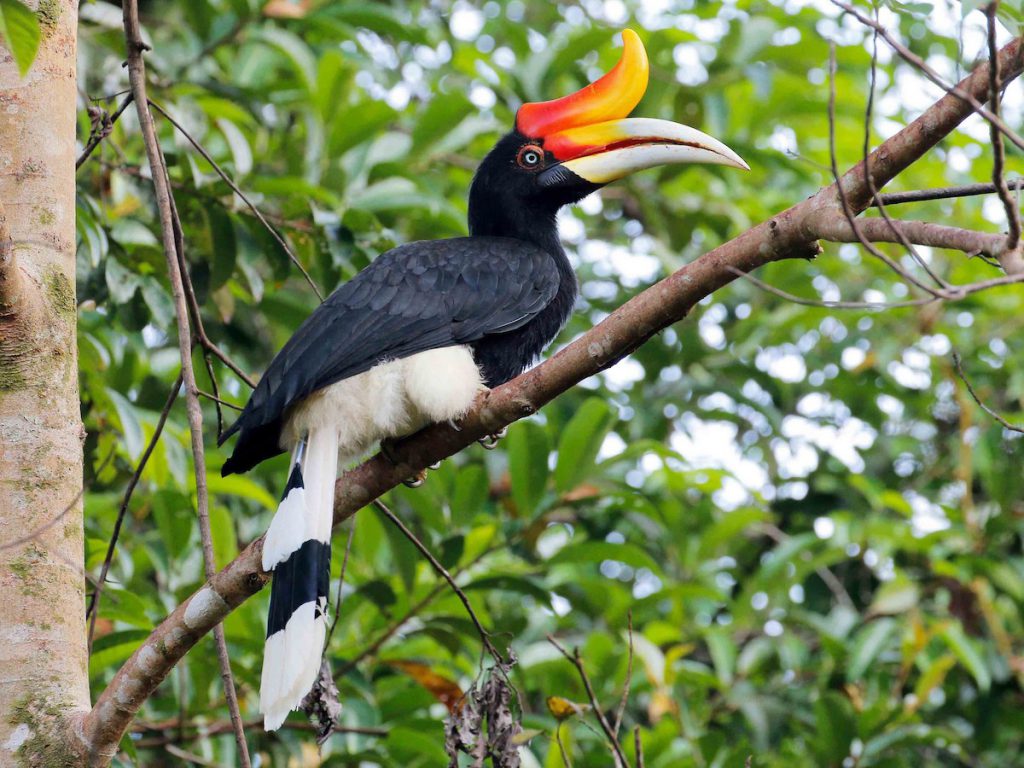
Just like the rhinoceros, this bird has an enormous bill and prominent casque which are orange and red.
Helmeted hornbill
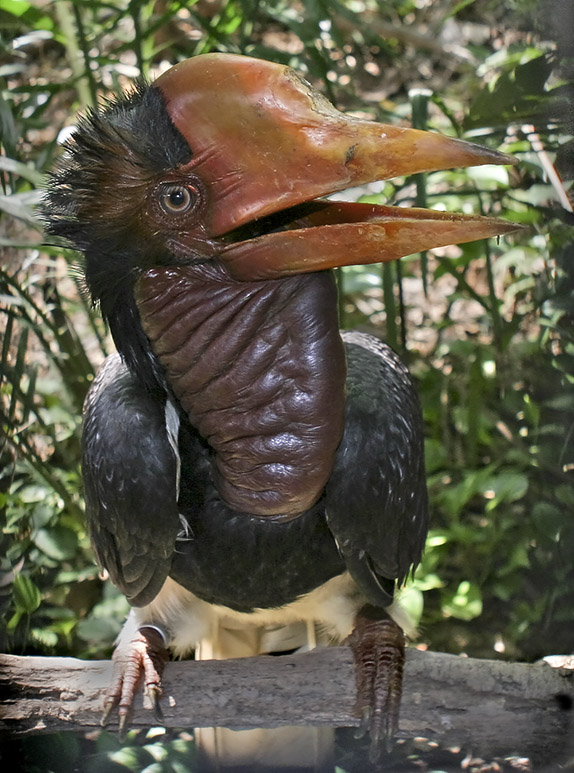
This large, bizarre-looking hornbill has mostly blackish plumage, except that the belly and legs are white. For females, their throats are pale blue to greenish in colour whereas red for males. The casque accounts up to 11% of its 3kg weight.
Images by ebird




